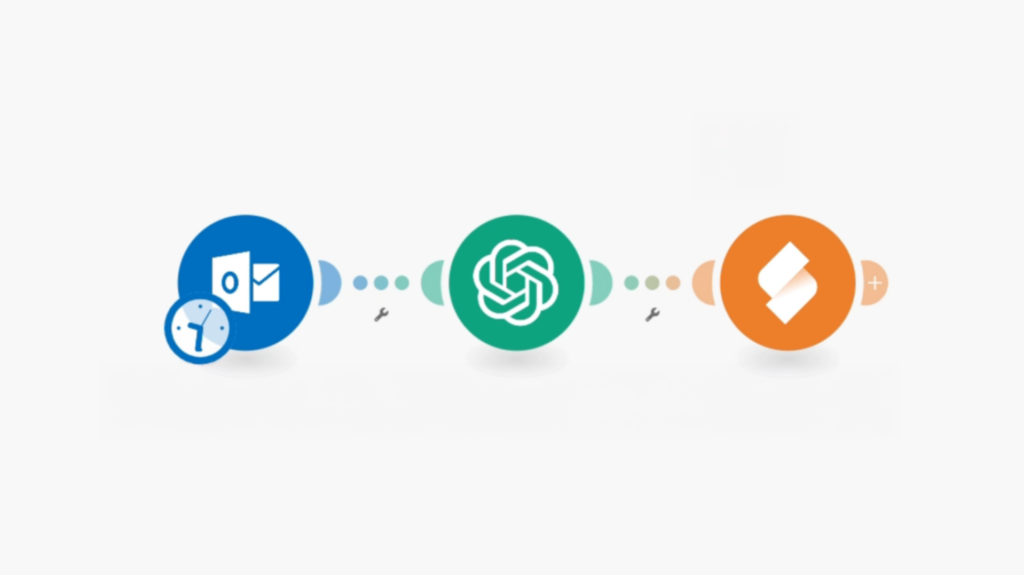A recent study shows that companies waste up to 50% of their working time on inefficient processes. No-code automation could reverse this trend. Are you ready for a new era of office automation?
In a world where the skills shortage poses huge challenges to the economy, companies are more than ever required to look for solutions to increase their efficiency. The solution could lie in a concept that has become increasingly important in recent years:
No-code automation is the buzzword. But what exactly does this term mean and how can it help companies to increase their productivity?
From cloud computing to no-code
To understand the importance of no-code automation, it is first necessary to look at the development of cloud computing. Cloud computing has fundamentally changed the way companies use IT resources. The three main categories can be summarized as follows:
- Infrastructure as a Service (IaaS): this is where basic computing resources such as servers and storage are provided via the internet.
- Platform as a Service (PaaS): This level allows developers to create applications without worrying about the underlying infrastructure.
- Software as a Service (SaaS): Here, ready-made software applications are provided via the Internet.
The largest cloud providers such as Amazon Web Services (AWS) with 31% market share, Microsoft Azure with 20% and Google Cloud Platform (GCP) with 12% have a dominant market position and offer comprehensive ecosystems for companies of all sizes.
From the cloud to automation
With the increasing spread of cloud services, a new need has emerged: the simple integration and automation of various applications and services.
iPaaS (Integration Platform as a Service) is a solution that helps companies to connect different cloud applications and automate workflows. It is not necessary to write a single line of code. Providers of iPaaS solutions such as Zapier, Make.com (formerly Integromat) and n8n have specialized in this requirement.
No-code automation in practice
An illustrative example of no-code automation is a workflow in which emails are monitored, sent to an AI tool, processed according to a stored prompt and the results are then transferred to a database.

[Image: Scenario make.com]
Such automation can take over routine tasks and relieve employees of time-consuming, repetitive activities.
The need to increase efficiency
To illustrate this topic’s relevance, we look at the latest findings of a long-term study on office efficiency in Germany. The study was conducted by Prof. Dr. Markgraf and his team at AKAD University for more than ten years and examines work efficiency in companies.
The results of the study are worrying: work efficiency in German offices has fallen by 50% in the last ten years.
Some key findings of the study:
- Daily time spent on email processing rose from 102 minutes (2013) to 163 minutes (2022) – an increase of 60%.
- 3% of working time is spent in meetings, with 13.4% of this time classified as inefficient.
- Time spent searching for information has almost doubled since 2013 and now accounts for 19.6% of working time.
The figures presented make it clear that companies urgently need to optimize their internal processes to remain competitive.
No-code automation as a solution
No-code automation is a promising approach in this context. It enables employees without in-depth IT knowledge to automate and optimize processes. This leads to the concept of “Citizen Developers”, i.e. employees who can create their applications and automation with the help of no-code tools.
The advantages of no-code automation are manifold:
- Time savings: routine tasks are automated, allowing employees to focus on value-adding activities.
- Cost reduction: by optimizing processes, companies can use resources more efficiently.
- Flexibility: no-code tools enable rapid adaptation to changing business requirements.
- Relief for the IT department: specialist departments can implement simple automation themselves.
- Improvement of the work-life balance: more efficient processes can reduce overtime work.
The path to successful implementation
To successfully implement no-code automation in your company, please note the following steps:
- Identify time-consuming, repetitive processes in your company.
- Select suitable no-code tools that match your existing systems
- Train your employees in the use of these tools and promote the development of citizen developers
- Establish clear guidelines for the creation and management of automations
- Regularly measure the impact of automation on your business efficiency.
Outlook: AI Agents and the future of automation
Development is already going one step further: AI agents based on no-code automation and artificial intelligence promise even more comprehensive automation of business processes. This technology is still in its infancy, but has the potential to fundamentally change the way we work.
Conclusion
The results of our latest survey underline the need to look at no-code automation.
The survey revealed that 56% of companies surveyed do not even know what no-code automation is. The lack of awareness of this promising technology illustrates that there is enormous untapped potential here
Companies that invest in this technology now and empower their employees will have a clear competitive advantage in the coming years.
The question is no longer whether you should use no-code automation, but how quickly you can get started. Because in a world where efficiency is the difference between success and failure, companies need to embrace this trend.






